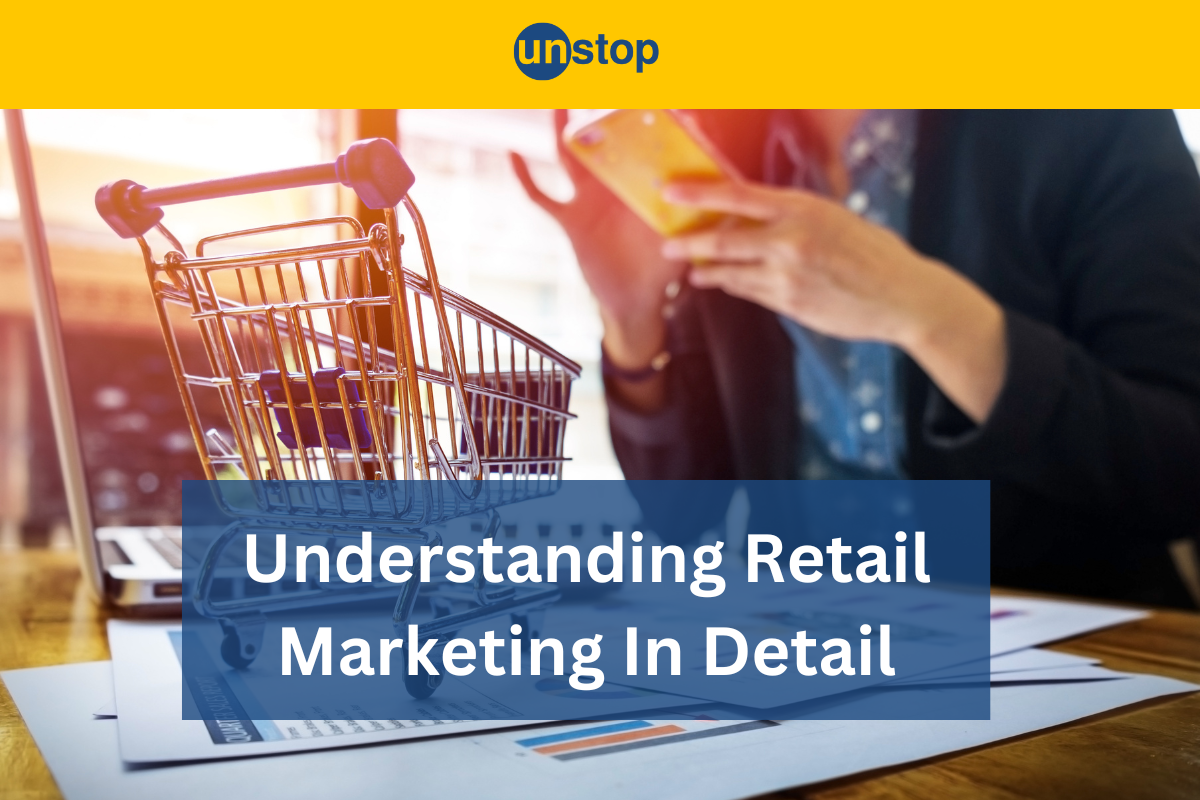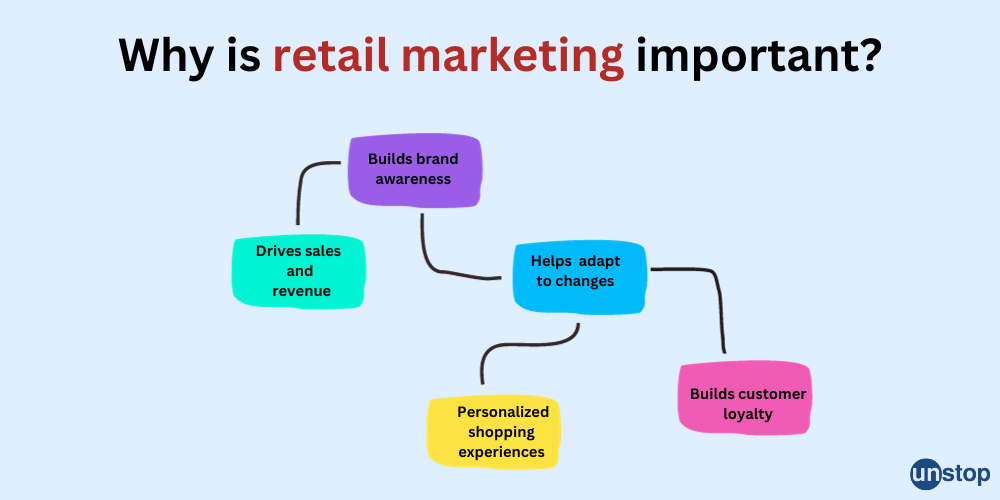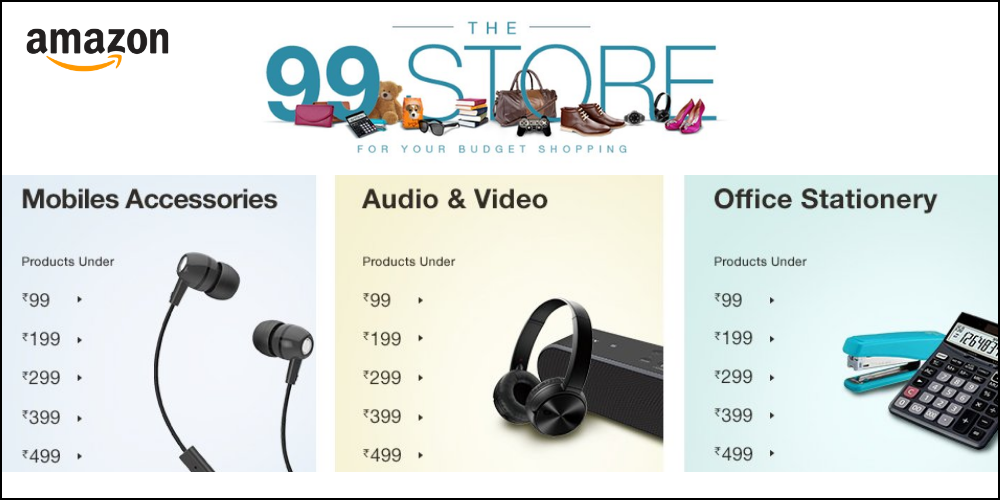- Functions of Retail Marketing
- Importance of Retail Marketing
- Types of Retail Marketing
- Retail Marketing Mix
- Macro and Micro Factors Influencing Retail Marketing
- Framing Your Retail Marketing Strategy
- Different Types of Retail Marketing Strategies
- Examples of Successful Retail Marketing Strategies
- Competitive Analysis in Retail Marketing
- Pricing Strategy and Tactics in Retail Marketing
- Key Takeaways from Retail Marketing
- Frequently Asked Questions
Retail Marketing: Types, Strategies And Examples Of Successful Market Players!

Retail marketing plays a vital role in the success of businesses operating in the retail industry. It encompasses various strategies and tactics aimed at promoting products or services within a retail environment.
This article explores the definition and scope of retail marketing, its importance for businesses, and how it has evolved over time. We will know about the key players in the retail marketing industry and understand how retail marketing is crucial for businesses to thrive in today's competitive market.
Functions of Retail Marketing
Before we understand the core functions of retail marketing, let’s first get an answer to the question, what is retail marketing?
Retail marketing refers to the activities and strategies retailers use to promote their products and attract customers to make purchases. It involves various techniques such as advertising, promotions, merchandising, and customer service to create a positive shopping experience and drive sales. Retail marketing aims to understand consumer behavior, preferences, and trends to target and engage with potential customers effectively. Ultimately, the goal of retail marketing is to increase brand awareness, customer loyalty, and revenue for the retail business.
Here are the core functions of retail marketing:
Identifying Customer Needs and Preferences
Retail marketing plays a crucial role in identifying customer needs and preferences. By conducting market research, retailers can gather data on consumer behavior, demographics, and buying patterns. This information helps them understand what customers want and tailor their offerings accordingly.
Creating Effective Product Assortments
Another important function of retail marketing is creating effective product assortments. Retailers need to carefully curate their offerings to meet the diverse needs and preferences of their target customers. They must consider factors such as brand reputation, quality, price range, and current market trends.
Implementing Pricing Strategies to Maximize Profits
Pricing strategies are an integral part of retail marketing. Retailers must set prices that attract customers while also maximizing profits. This involves considering factors such as production costs, competition, perceived value, and pricing elasticity.
Developing Promotional Campaigns to Attract Customers
Promotional campaigns are essential for attracting customers and driving sales. Retailers use various marketing channels such as advertising, social media, email marketing, and influencer collaborations to reach their target audience effectively.
Also Read: Difference between Wholesale and Retail With Examples
Importance of Retail Marketing
Retail marketing plays a crucial role in driving sales and revenue for retail businesses. It helps them reach their target audience effectively and create brand awareness among customers. By implementing strategic marketing tactics, retail businesses can build customer loyalty and enhance their reputation in the market.

Drives sales and revenue for retail businesses
Effective retail marketing strategies help businesses attract more customers, leading to increased sales and revenue. Through targeted advertising campaigns, promotions, and discounts, retailers can entice consumers to make purchases. By understanding consumer behavior and preferences, retailers can tailor their marketing efforts to meet customer needs and drive conversions.
Builds brand awareness and loyalty among customers
Retail marketing allows businesses to establish a strong brand presence in the market. By consistently promoting their products or services through various channels such as social media, email marketing, or traditional advertising methods like billboards or TV commercials, retailers can increase brand visibility. This exposure helps create trust among consumers and fosters long-term loyalty towards the brand.
Creates personalized shopping experiences for consumers
One of the key benefits of retail marketing is its ability to provide personalized shopping experiences for consumers. Through data analysis and customer segmentation techniques, retailers can understand individual preferences and offer tailored recommendations or promotions. This personalization enhances the overall shopping experience for customers and increases the likelihood of repeat business.
Helps businesses adapt to changing market conditions
In today's dynamic market environment, it is essential for retail businesses to stay agile and adapt quickly to changing trends or consumer demands. Retail marketing enables businesses to gather valuable insights about market conditions through research, surveys, or feedback mechanisms. This information helps them make informed decisions about product offerings, pricing strategies, or promotional activities.
Types of Retail Marketing
1. Brick-and-mortar retailing
Brick-and-mortar retailing refers to physical stores that sell products directly to customers. These are the traditional stores we all know and love, where you can walk in, browse through the aisles, and make your purchase at a checkout counter. Think of your favorite clothing boutique or neighborhood grocery store.
2. E-commerce
E-commerce has revolutionized the way we shop by providing online platforms that facilitate the sale of goods and services. With just a few clicks, you can order products from the comfort of your own home and have them delivered right to your doorstep. Online giants like Amazon have made e-commerce a booming industry.
3. Omni-channel retailing
Omni-channel retailing takes things a step further by integrating multiple channels for a seamless shopping experience. This means that consumers can interact with brands across various touchpoints, such as physical stores, websites, mobile apps, social media platforms, and more. For example, you might start browsing for shoes on a brand's website and then seamlessly switch to their mobile app to complete your purchase.
4. Direct selling
Direct selling involves selling products directly to consumers without intermediaries. This could be done through methods like home parties or one-on-one demonstrations. Think of companies like Avon or Tupperware that rely on independent consultants who promote and sell their products directly to customers.
To sum it up, Brick-and-mortar stores offer an immersive shopping experience, while E-Commerce provides convenience at our fingertips. Omni-channel retailing combines both worlds for a seamless customer journey across different platforms. And direct selling enables personal connections between sellers and buyers.
Retail Marketing Mix
The retail marketing mix refers to the combination of elements that a retailer uses to promote and sell its products or services to customers. These elements typically include product, price, place, and promotion.
- Product: This element involves the assortment of products or services offered by the retailer, including the quality, design, features, branding, and packaging.
- Price: This element focuses on the pricing strategy adopted by the retailer, considering factors such as pricing objectives, competitive pricing, discounts, and payment terms.
- Place: Also known as distribution, this element deals with how the retailer makes its products or services available to customers. It includes decisions related to store location, online presence, logistics, and inventory management.
- Promotion: This element encompasses the various marketing strategies and tactics used by the retailer to communicate with customers and drive sales. This can include advertising, sales promotions, public relations, and social media marketing.
By effectively managing these elements of the retail marketing mix, retailers can create a compelling value proposition for customers and differentiate themselves from competitors in the marketplace.
Macro and Micro Factors Influencing Retail Marketing
Economic conditions, technological advancements, legal regulations
The success of retail marketing is influenced by various macro and micro factors. On a macro level, economic conditions play a significant role. When the economy is booming, people have more disposable income to spend on retail products and services. Conversely, during an economic downturn, consumers tend to be more cautious with their spending.
Technological advancements also have a profound impact on retail marketing. The rise of e-commerce has revolutionized the way people shop, forcing retailers to adapt their strategies to cater to online consumers. Innovations such as mobile payment systems and virtual reality experiences have further transformed the retail landscape.
Legal regulations are another important macro factor that affects retail marketing. Laws regarding consumer protection, advertising practices, and data privacy can significantly impact how retailers operate and market their products.
Consumer behavior, competition, market trends
On a micro level, understanding consumer behavior is crucial for effective retail marketing. By analyzing purchasing patterns and preferences, retailers can tailor their strategies to meet customer needs and desires. Factors such as price sensitivity, brand loyalty, and impulse buying influence consumer behavior in the retail space. Apart from this, social media has become a powerful tool in shaping consumer buying decisions.
Competition also plays a vital role in shaping retail marketing efforts. With numerous players vying for consumers' attention and wallets, retailers must differentiate themselves through unique value propositions or innovative marketing campaigns.
Keeping up with market trends is essential for staying relevant in the ever-changing retail industry. Whether it's following popular fashion styles or embracing sustainable practices demanded by environmentally conscious consumers - being aware of market trends allows retailers to align their offerings with current demands.
Impact of demographic changes on retail marketing strategies
Demographic changes can significantly impact retail marketing strategies. As populations age or migrate from one area to another, retailers must adapt their approaches accordingly. For example, an aging population may require products tailored for seniors, while targeting specific ethnic groups may necessitate localized marketing efforts.
Framing Your Retail Marketing Strategy
Setting Clear Goals and Objectives
To effectively navigate the world of retail marketing, it is crucial to set clear goals and objectives for your business. These serve as guideposts, helping you stay focused on what you want to achieve. Whether it's increasing sales, expanding your customer base, or enhancing brand awareness, having specific targets in mind will provide direction for your marketing efforts.
Conducting Market Research
Understanding your target audience and competitors is essential in developing a successful retail marketing strategy. By conducting thorough market research, you can gain insights into consumer preferences, buying behaviors, and emerging trends. This knowledge allows you to tailor your marketing initiatives to meet the needs and desires of your target market while staying ahead of the competition.
Defining Your Unique Selling Proposition (USP)
In a crowded marketplace, it's vital to define what sets your brand apart from others. This is where your unique selling proposition (USP) comes into play. Your USP highlights the distinctive features or benefits that make your products or services stand out. It could be superior quality, exceptional customer service, or innovative solutions. Identifying and promoting your USP helps create a compelling reason for customers to choose your brand over competitors.
Creating a Positioning Strategy
A strong positioning strategy is crucial for establishing a distinct brand image in the minds of consumers. It involves defining how you want your brand to be perceived relative to competitors. Consider factors such as pricing, product attributes, customer service, and overall brand experience when crafting your positioning strategy. By differentiating yourself from others in the market, you can attract and retain customers who resonate with what makes your brand special.
Different Types of Retail Marketing Strategies
Promotional Pricing Strategy
One effective retail marketing strategy is the use of promotional pricing. This involves offering discounts, special deals, or limited-time offers to attract customers. By providing incentives for purchasing, such as buy-one-get-one-free or percentage-off discounts, retailers can create a sense of urgency and encourage customers to make a purchase.
Social Media Marketing Strategy
Another popular approach in retail marketing is leveraging social media platforms for brand awareness. Through targeted advertising and engaging content, retailers can reach a wide audience and build an online presence. By utilizing platforms like Facebook, Instagram, and Twitter, retailers can connect with potential customers, share promotions and product updates, and foster customer loyalty.
In-Store Experiential Marketing Strategy
Creating immersive experiences within physical stores is another effective retail marketing strategy. By designing interactive displays or hosting events that engage customers on a sensory level, retailers can leave a lasting impression. This approach allows customers to experience products firsthand and creates a memorable shopping experience that encourages repeat visits.
Loyalty Program Strategy
Implementing a loyalty program is yet another way for retailers to drive customer engagement and retention. By rewarding loyal customers with exclusive benefits such as discounts, freebies, or early access to sales, retailers can incentivize repeat purchases. These programs help foster customer loyalty while also collecting valuable data on customer preferences and behaviors.
In today's dynamic retail landscape, it's important for businesses to employ a variety of marketing strategies to stay competitive. From traditional promotional pricing tactics to digital strategies like social media marketing and experiential approaches in-store - using multiple channels is key.
Examples of Successful Retail Marketing Strategies
Titan's Focus on Quality & Dependability
Titan, an Indian watch brand, has successfully implemented a retail marketing strategy that has propelled it to the forefront of the industry. One of the main components of Titan's strategy is its dedication to establishing a strong brand image. By consistently highlighting the quality and dependability of its watches, ranging from affordable options to luxury timepieces, Titan has positioned itself as a trusted and high-end brand. This approach has not only helped Titan build a loyal customer base but also solidified its presence in the market.
Furthermore, the brand has established a strong presence both offline and online through exclusive stores, multi-brand outlets, and e-commerce platforms. This omnichannel strategy allows Titan to reach customers through various touchpoints and provide them with a seamless shopping experience.

Another noteworthy aspect of Titan's retail marketing strategy is its focus on customer engagement and experience. The brand regularly organizes promotional events, offers personalized services, and provides after-sales support to enhance the overall customer experience. This not only fosters customer loyalty but also generates positive word-of-mouth and referrals.
In conclusion, Titan's successful retail marketing strategy can be attributed to its strong brand image, product diversification, omnichannel presence, and customer-centric approach. By effectively combining these elements, Titan has differentiated itself from competitors and maintained a prominent position in the Indian market.
Zara's Fast-Fashion Model with Frequent Inventory Turnover
Zara, a Spanish clothing retailer, has truly transformed the retail industry with its innovative fast-fashion model. Unlike traditional retailers that release new collections only a few times a year, Zara constantly refreshes its inventory, ensuring that customers always have access to the latest fashion trends. This approach creates a sense of urgency among consumers, compelling them to make purchases before their desired items sell out.
By staying ahead of the curve and quickly responding to emerging fashion trends, Zara not only attracts repeat customers but also maintains a constant flow of foot traffic in their stores. This means that whenever customers step into a Zara store, they can expect to find new and exciting products that have just hit the shelves. This ever-changing inventory keeps customers coming back for more, as they know they will always discover something fresh and on-trend at Zara.

Additionally, this strategy allows Zara to cater to diverse customer preferences and stay relevant in an industry where trends evolve rapidly. Whether it's a new color palette or a popular style, Zara is quick to incorporate these elements into their collections, ensuring that their customers are always at the forefront of fashion. In summary, Zara's fast-fashion model has revolutionized the retail industry by creating a dynamic shopping experience that appeals to fashion-conscious individuals seeking the latest trends and styles.
Starbucks' Mobile App Integration for Seamless Ordering Experience
Starbucks has successfully integrated mobile app technology into its retail marketing strategy. With their user-friendly app, customers can easily place orders, customize beverages, and make payments seamlessly. This convenience enhances the overall customer experience, encourages repeat visits, and boosts sales performance for Starbucks stores.
Competitive Analysis in Retail Marketing
Competitive analysis to frame your retail strategy includes the following steps:
Identifying direct and indirect competitors in the market
To stay ahead in the retail marketing game, it's crucial to identify both direct and indirect competitors. Direct competitors are those who offer similar products or services, targeting the same customer base. Indirect competitors may not offer identical products but cater to a similar need or desire. By identifying these competitors, retailers can better understand their position in the market and develop strategies accordingly.
Analyzing competitor's pricing, product assortment, and promotional strategies
Once identified, it's essential to analyze the pricing, product assortment, and competitors' promotional strategies. This analysis provides valuable insights into how they attract customers and differentiate themselves from others. By understanding their pricing structure, retailers can adjust their own prices competitively. Examining product assortments helps retailers identify gaps in the market that they can fill with unique offerings. Studying promotional strategies allows retailers to learn from successful tactics employed by their rivals.
Assessing competitor's strengths and weaknesses to gain a competitive advantage
Competitive analysis involves assessing both the strengths and weaknesses of competitors. By recognizing their strengths, retailers can determine areas where they need improvement or find new ways to excel beyond what is currently offered. Similarly, identifying weaknesses presents opportunities for differentiation by addressing customer pain points that are not adequately addressed by competitors.
Monitoring market trends to stay ahead of the competition
Market trends play a significant role in retail marketing success. Staying informed about emerging trends allows retailers to adapt quickly and effectively meet changing consumer demands. By monitoring shifts in customer preferences or emerging technologies, retailers can proactively adjust their strategies before their competition does.
Pricing Strategy and Tactics in Retail Marketing
In retail marketing, pricing plays a crucial role in determining the success of a product or service. There are several strategies and tactics that businesses employ to set their prices effectively. Let's explore some of these strategies and tactics in more detail.
Cost-based pricing
One common approach is cost-based pricing, where prices are determined by considering production costs along with desired profit margins. This method ensures that businesses cover their expenses while making a reasonable profit. By analyzing the cost structure, companies can set competitive prices that align with market demands.
One example of a brand that uses cost-based pricing is Apple. Apple determines the price of its products by considering the cost of production, including materials, labor, and overhead expenses. They then add a margin to ensure profitability. This approach helps Apple maintain consistent pricing across its product line and cover its expenses while also generating profits.
Value-based pricing
Another strategy is value-based pricing, which focuses on determining prices based on perceived customer value. Instead of solely relying on costs, this approach takes into account the benefits and unique features that customers associate with a product or service. By understanding what customers are willing to pay for certain attributes or benefits, businesses can optimize their pricing strategy to capture maximum value.
One brand that uses value-based pricing is Tesla. Tesla prices its electric vehicles based on the value they provide to customers rather than solely on production costs. This approach allows Tesla to capture the premium market and position itself as a high-value brand in the automotive industry.
Psychological pricing tactics
To influence consumer perception and purchasing decisions, retailers often employ psychological pricing tactics. These techniques leverage human psychology to create an illusion of a better deal or increased value for customers. Examples include using charm prices (ending in 9), bundle offers, limited-time promotions, or offering discounts on higher-priced items.

A brand that uses psychological pricing tactics is Amazon. They often price their products just below a round number, such as INR 99 instead of INR 100, to create the perception of a better deal and encourage more purchases.
Dynamic pricing
Dynamic pricing is another tactic used by retailers to adjust prices based on real-time demand and supply conditions. With the help of advanced algorithms and data analysis tools, businesses can modify their prices dynamically to maximize revenue and respond quickly to fluctuations in market conditions.
One Indian brand that uses dynamic pricing is Ola, a ride-hailing service. Ola uses surge pricing during peak hours or high-demand periods to increase fares and incentivize more drivers to be available. This helps to balance supply and demand and ensure efficient utilization of resources.
By utilizing various pricing strategies and tactics, retailers can effectively position their products or services in the market while maximizing profitability. Whether it's cost-based or value-based approaches, employing psychological tactics or dynamic price adjustments, each strategy has its own advantages and considerations depending on the specific context of the business.
Key Takeaways from Retail Marketing
We discussed the functions of retail marketing, including product assortment, pricing, promotion, and distribution. We delved into different strategies and provided examples of their successful implementations.
Understanding macro and micro factors that influence retail marketing is crucial for developing an effective strategy. Factors such as economic conditions, consumer behavior, technological advancements, and competition play a significant role in shaping retail marketing efforts. By framing your retail marketing strategy with these factors in mind, you can better position your brand to meet customer needs and stay ahead of the competition.
To conclude, retail marketing is a multifaceted discipline that requires careful planning and execution to drive business success. By leveraging the right strategies and considering key factors influencing the industry, retailers can create compelling experiences that attract customers and foster long-term loyalty. Whether you're a small local retail store or a large multinational chain, investing in effective retail marketing can make all the difference in achieving your business goals.
Frequently Asked Questions
1. What are some popular promotional techniques used in retail marketing?
Promotional techniques commonly used in retail marketing include sales promotions (such as discounts or buy-one-get-one offers), advertising campaigns (through various channels like TV, radio, print media), social media promotions (utilizing platforms like Facebook or Instagram), loyalty programs (rewarding customers for repeat purchases), and influencer collaborations.
2. How does market research contribute to successful retail marketing?
Market research helps retailers gain insights into their target audience's preferences, behaviors, buying patterns, and demographics. This information allows businesses to tailor their products or services accordingly and develop targeted marketing strategies that resonate with their customer base.
3. What role does customer experience play in retail marketing?
Customer experience plays a vital role in driving success in retail marketing. Providing exceptional service, personalized interactions, convenient shopping experiences, and seamless online/offline integration can enhance customer satisfaction and loyalty. Positive experiences lead to repeat purchases, word-of-mouth recommendations, and a strong brand reputation.
4. How can retailers leverage technology in their marketing efforts?
Retailers can leverage technology in various ways to enhance their marketing efforts. This includes implementing e-commerce platforms for online sales, utilizing data analytics to gain insights into consumer behavior, adopting mobile payment solutions for convenience, using social media platforms for targeted advertising and engagement with customers, and employing customer relationship management (CRM) systems to manage customer interactions effectively.
5. What are some emerging trends in retail marketing?
Some emerging trends in retail marketing include the rise of omnichannel retailing (integrating online and offline channels seamlessly), personalized marketing (tailoring messages based on individual preferences), experiential retail (creating immersive shopping experiences), sustainability-focused initiatives (appealing to environmentally-conscious consumers), and the use of artificial intelligence (AI) for personalized recommendations and efficient operations.
Suggested Reads:
Alekhya Chakrabarty is a father, a doodler, a trivia buff, a sports fanatic and a lifelong student of marketing. Alekhya is the VP of Marketing & Growth at Unstop, the engagement and hiring platform which connects students and graduates with opportunities. He has over a decade and a half of experience in driving revenue and building brands with the likes of Nestle, HUL and ITC. He is an alumnus of IMT Ghaziabad and in his last stint he was leading the marketing function at Sunstone, a higher education startup. Alekhya has been recognised as a ‘Top Voice’ on LinkedIn for Digital Marketing & Brand Management. He runs a marketing podcast titled East India Marketing Company to drive conversations around growth, content, culture and commerce.
Login to continue reading
And access exclusive content, personalized recommendations, and career-boosting opportunities.
Subscribe
to our newsletter
















Comments
Add comment